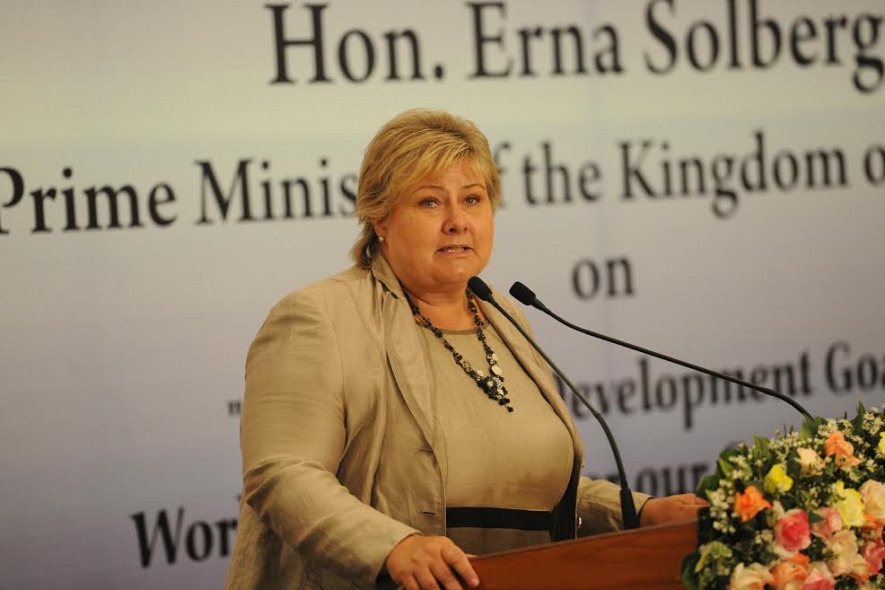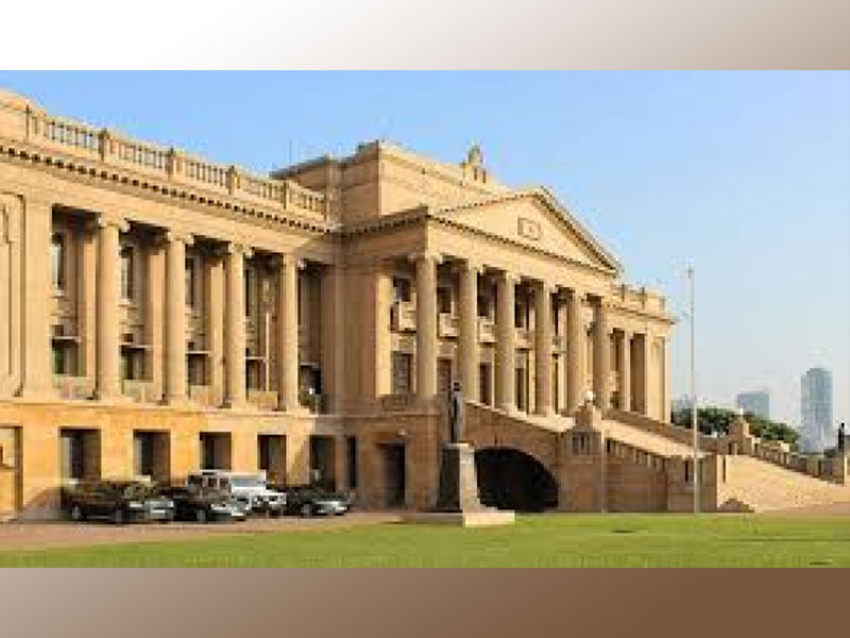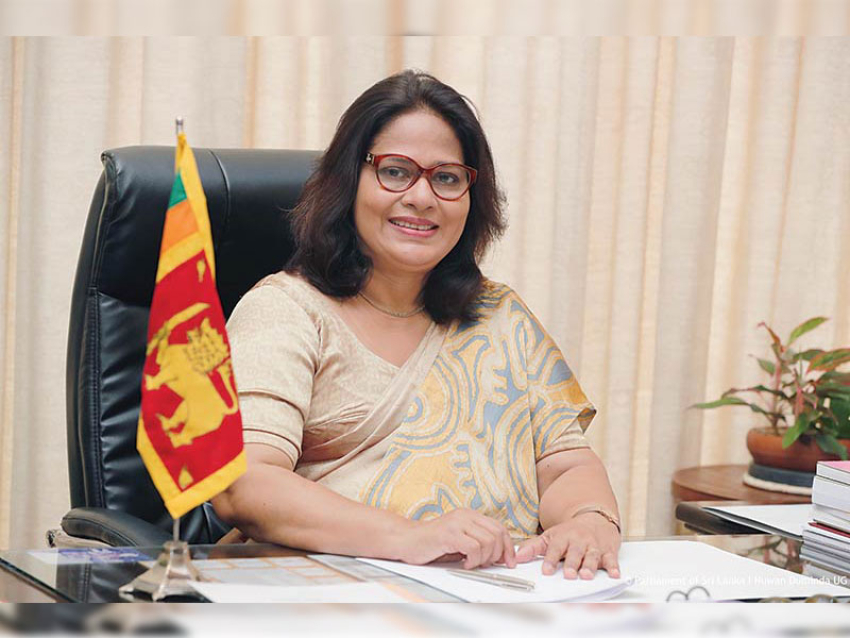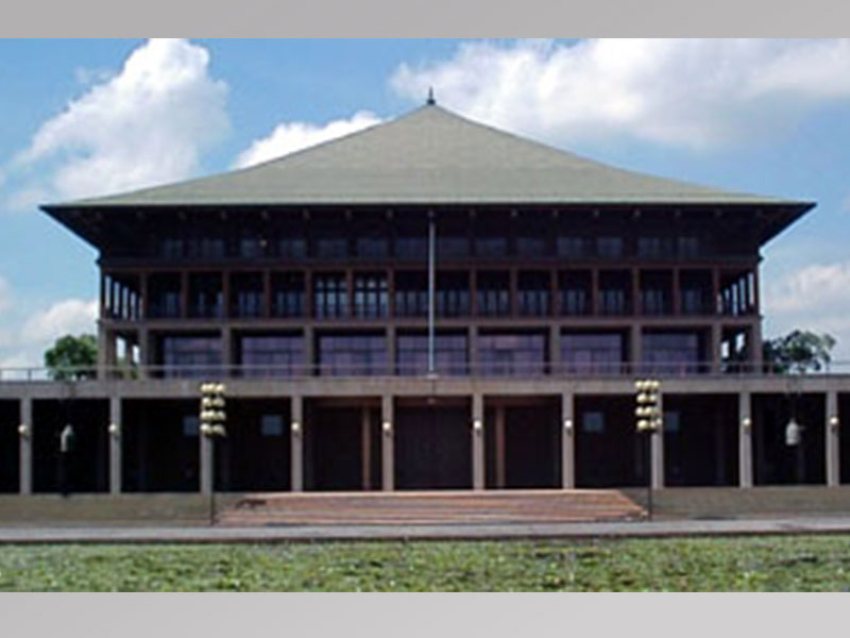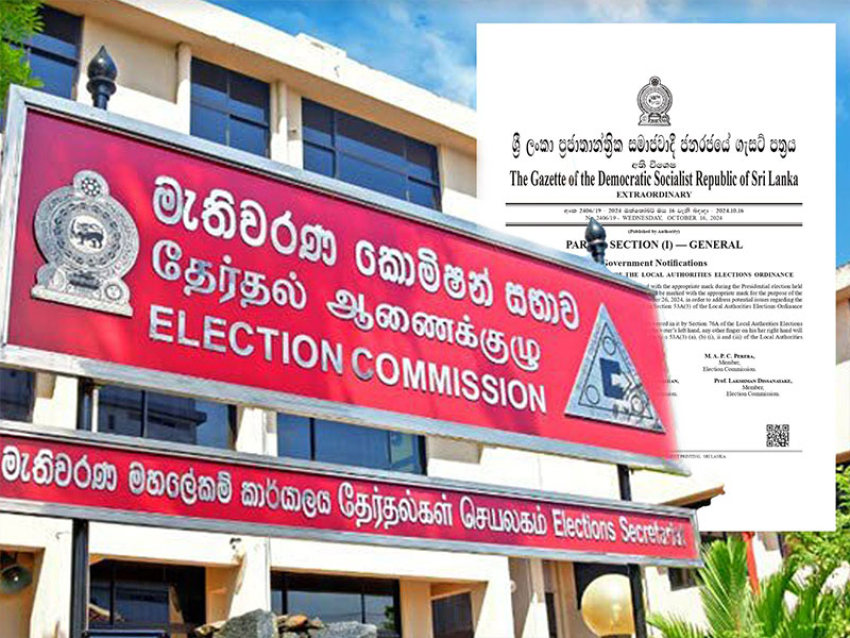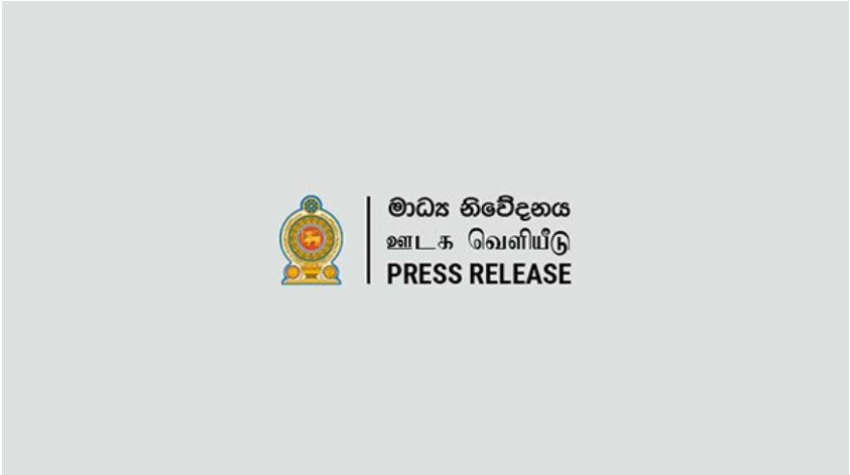Minister of Foreign Affairs, Executive Director, Excellencies, ladies and gentlemen,
Thank you, Dr Panditaratne for giving me this opportunity to speak about sustainable peace and development at this prestigious institute. The topic is very close to my heart as a co-chair of the UN Secretary-General’s Sustainable Development Goals Advocacy Group and as Prime Minister of Norway.
After having spent a few days on holiday in your beautiful country, I have already become very fond of Sri Lanka – its wonderful people, it’s fascinating culture and its magnificent scenery.
Lakshman Kadirgamar, who gave his name to this institute, lost his life in search of a path to peace. This tragedy tells us how costly and difficult achieving peace can be.
Foreign Minister Kadirgamar recognised that significant change was needed to enable Sri Lanka’s communities to live together peacefully. His vision for Sri Lanka was a national identity based on pluralism. He has said that – and I quote: ‘People who live in Sri Lanka are first and foremost Sri Lankans, then we have our race and religion, which is something given to us at birth’.
This institute is keeping Mr Kadirgamar’s vision for Sri Lanka alive by providing valuable analyses of the country’s strategic interests in a context of changing global realities.
Since independence in 1948, Sri Lanka has consistently shouldered international responsibilities. It has taken active part in UN norm-setting processes and has provided staff to key UN positions, including several Under-Secretary-Generals. Most notably Sri Lanka has contributed thousands of UN peacekeepers to missions around the world. At present, more than a thousand Sri Lankan troops are serving in UN peacekeeping missions in Haiti, South Sudan, and the Central African Republic.
These are crucial contributions not only to peace, but also to future prospects for development in countries seriously affected by conflict.
At home, Sri Lankan welfare policies have attracted international attention and influenced other countries’ policymaking. Achievements in the areas of health and education were important for Sri Lanka’s progress towards the Millennium Development Goals. Indeed, free education and health services have been provided for decades. These and other achievements provide a good basis for achieving the SDGs.
Education, particularly for girls, is a human right as well as the most effective investment in sustainable development. Women’s full and equal participation at all levels and sectors in society is vital, including in politics and business.
This will boost economic growth, help ending poverty, improve global health, protect our environment and climate and strengthen peace and stability.
As co-chair of UN Secretary-General Ban Ki-moon’s Sustainable Development Goals Advocacy Group, I am pleased that the development priorities of Sri Lanka are in line with the SDGs. As Prime Minister of Norway, I am also pleased that these priorities shape our bilateral development cooperation. Key goals in this respect include:
• SDG 13 on climate action;
• SDG 14 on conservation of the oceans;
• SDG 16 on peace and justice;
• SDG 5 on gender equality; and
• SDG 7 on affordable and clean energy.
First of all, I would like to share my thoughts about why and how the SDGs are a roadmap to the future we all want.
I see the set of SDGs as the main track – not a side track – for addressing the root causes of poverty, conflict, violent extremism, refugee crises, youth unemployment, forced migration and global warming.
These economic, social and environmental problems affect all of us, regardless of where we live – or how we make a living. When it comes to achieving sustainable development all countries are developing countries.
We all need to see the link between the long-term work to achieve the SDGs and the comprehensive action needed to address what is broken in our world.
Our aim is to leave no one behind as we make progress towards the SDGs.
Why is the principle of leaving no one behind so important?
Nelson Mandela has put it best – and I quote: ‘As long as poverty, injustice and gross inequality exist in our world, none of us can truly rest.’
Eradicating extreme poverty, ensuring mothers and children do not die from avoidable complications during childbirth, making sure that everyone is nourished, and gets a quality education – all this is our common responsibility.
So leaving no one behind is the right motto for our efforts.
It is also a smart motto in our highly interdependent world.
If we are to achieve lasting peace, stop forced migration, fight pandemics and stop harmful climate change anywhere in the world, our common SDG efforts must apply everywhere in the world.
This is why we will not leave fragile and marginalised areas and populations behind.
We know from the MDG campaign that reaching the most marginalised is difficult. This is mainly due to problems of access and high costs.
It is often hard to reach people trapped in areas of crisis and conflict for obvious reasons of safety.
And it is costly because a good deal of infrastructure has to be built from scratch in the poorest and most marginalised areas of the world.
This means that people living in these areas miss out on virtually all the development taking place elsewhere in the world, and that they do not enjoy even the most basic rights.
However, this should be taken as a challenge – not a discouragement.
If it takes preventing and stopping wars – if it takes building basic infrastructure from scratch – to reach the most vulnerable, marginalised and destitute, we are going to do just that.
And we are going to do it for our common good.
The SDGs are universal. We all own these goals – and we can only achieve them together. That means that we need a strong sense of ownership, able leadership and innovative public partnerships at all levels.
Ownership is essential. It is human nature to care about what you own.
Besides, ownership of all the goals – not just by leaders, but by everyone – is crucial if we are to mobilise the extra effort required.
There are many good examples of building SDG ownership, such as the SDG consultation processes with relevant stakeholders around the world. These should continue.
Awareness and knowledge are essential for ownership. In Norway, the SDGs are to be included in our school curriculums. Ensuring free media is also an important part of our efforts.
The business sector too is taking ownership of the SDGs, as a growing number of companies align their business strategies with the goals. I have learnt for instance that the Sri Lankan textile industry has initiated energy efficiency efforts.
Today, and every day until the goals are achieved, we must take concrete steps to make the world more sustainable.
This requires leadership in all countries and at all levels of society.
There are already several examples of leadership within the private sector. Now political leaders must cultivate political will. And they must translate political will into legislation, policies and concrete plans.
Then we must finance and implement the plans.
Financing sustainable development requires domestic revenue generation combined with good management of existing resources and improved tax structures that eliminate tax havens.
This is not only a question of global leadership; it is also a question of national and local leadership. At the same time it is a question of international solidarity.
International development aid will be needed in the most vulnerable areas of the world to ensure that no one is left behind.
The 17 goals are interconnected, and many of them require cooperation across national borders.
That means that we will fail or succeed together.
In many areas, business as usual will not do. We must build new and innovative partnerships.
Governments, businesses, civil society organisations and academia must work together to find efficient, sustainable solutions locally, nationally and globally.
The best-known example of an international, cross-sectoral partnership is probably GAVI, the Vaccine Alliance. GAVI was important for the success of the Millennium Development Goals.
Let us find inspiration in the Vaccine Alliance as we form partnerships based on the new goals.
For example, Sri Lanka and Norway could work together through our fisheries cooperation on sustainable use of marine resources (SDG 14). We hope that the Norwegian funded research vessel Fridtjof Nansen will visit Sri Lankan waters next year to do a stock assessment.
I believe equity in education is the key to unlocking opportunities for everybody to enjoy a good life. Worldwide, 37 million children and adolescents are out of school due to crises and conflicts.
In Syria, for example, it is clear that the international community has done too little too late. School provides a sense of normality and hope, and helps build skills that give young people opportunities for the future. It will be even more challenging to build inclusive and sustainable societies if children and young people are denied an education.
The main responsibility for education rests with national governments. Domestic resource mobilisation is therefore crucial. At the same time, aid will continue to play a role, especially in the poorest countries, in fragile situations and for marginalised groups.
When my Government took office almost three years ago, we made education the top priority in Norway’s development policy. We are in the process of doubling aid for education over a four-year period, with particular focus on girls’ education, quality and learning outcomes, vocational training, and education in emergencies and protracted crises.
We have chosen a broad and comprehensive approach, using a variety of channels and partners. We want to spur action at the global, national and local level. Norway is a strong supporter of multilateral institutions including UNICEF and UNESCO. We are doubling our support to the Global Partnership for Education.
A substantial part of our funding is also channelled through civil society. It is important to build accountability and engagement at the community level, and local NGOs have a key role to play, involving parents and local communities.
The downward trend in aid for education over the past years must be reversed. We need a renewed and compelling investment case for education. And we need a financing pathway for achieving universal access to quality education.
This is why I initiated the International Commission on Financing Global Education Opportunities, together with UNESCO General Director Irina Bokova and the Presidents of Chile, Indonesia and Malawi. The Commission was established last summer and is chaired by the UN Special Envoy for Global Education, Gordon Brown.
In September, the commission will submit its report to the UN Secretary-General who has promised that he will act upon its recommendations. I have high hopes that this report will mobilise greater political will and more financial resources.
Reaching SDG 4 – and the other goals – will be a challenge. But the new development agenda also offers a unique opportunity. For the first time in history, we can succeed in providing quality education for all children and young people. Sri Lanka has achieved a literacy rate of more than 92%, gender parity in education, and has put an end to disparity in school enrolment. Here you are ahead of other countries in the region, and can lead the way.
Turning now to health, Norway’s investments in global health in 2016 will amount to 365 million US dollars. Our two main funding channels are GAVI (the Vaccine Alliance) and the Global Fund to Fight Aids Tuberculosis and Malaria. Both organisations are increasing their efforts and resources to help those who are hardest to reach, in line with the principle of leaving no one behind.
In conclusion, I would like to underline that the Sustainable Development Goals are not just a means of fixing what is broken in our world; they will put the world on a new, sustainable path.
It will take a lot of effort to achieve the goals, but this is our generation’s most important task. If we put our minds and resources to it, we can eradicate extreme poverty by 2030.
So let us get to work. In Norway, Sri Lanka – all over the world.
Thank you

